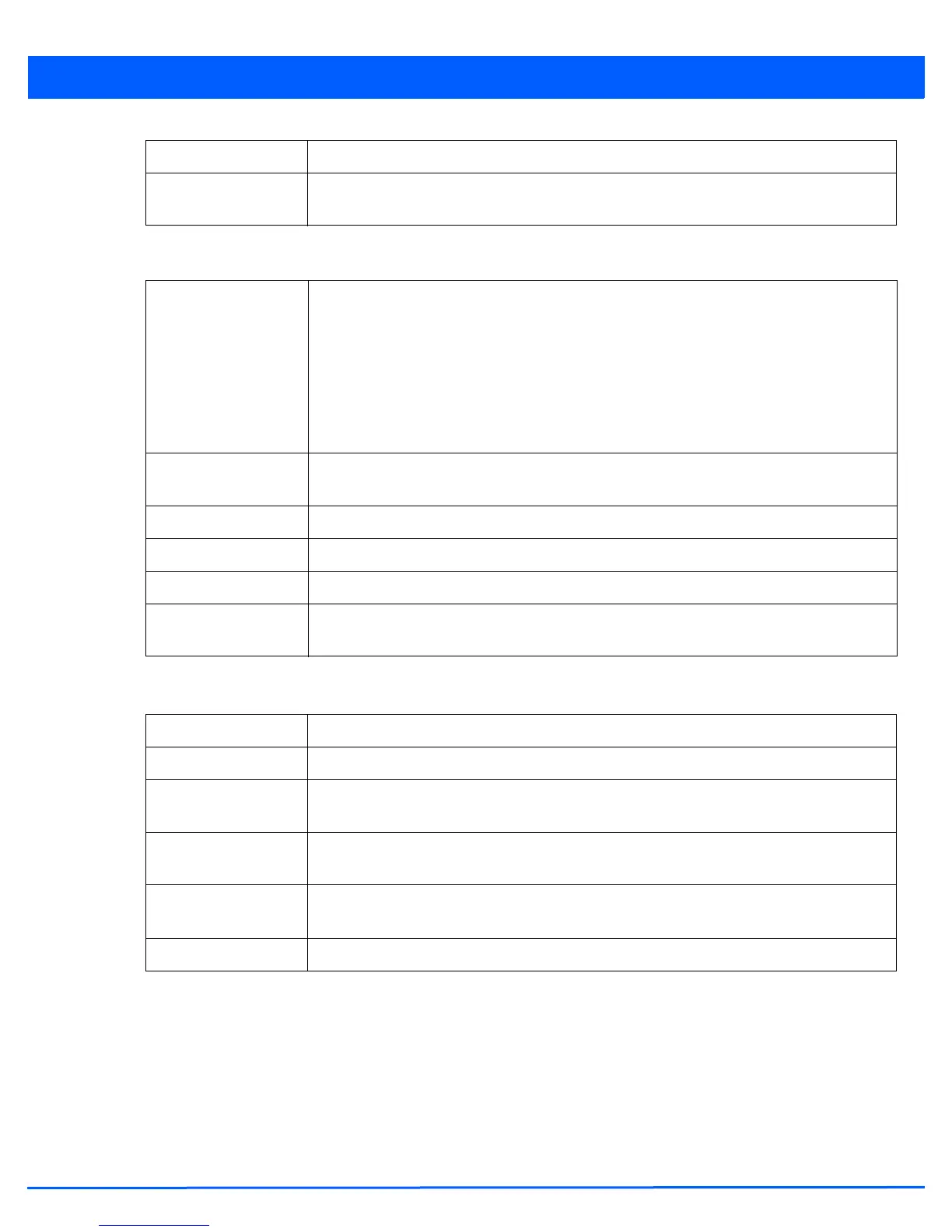Statistics 13 - 141
The RF Quality Index field displays the following:
The Association field displays the following:
4. The Traffic Utilization field displays statistics on the traffic generated and received by the selected client. This area
displays the traffic index, which measures how efficiently the traffic medium is utilized. It’s defined as the percentage of
current throughput relative to the maximum possible throughput.
Traffic indices are:
• 0 – 20 (Very low utilization)
• 20 – 40 (Low utilization)
• 40 – 60 (Moderate utilization)
Encryption Lists the encryption scheme applied to the client for interoperation with the access point.
Captive Portal
Authentication
Displays whether captive portal authentication is enabled for the client as a guest access
medium to the controller or service platform managed network.
RF Quality Index Displays information on the RF quality for the selected wireless client. The RF quality index is
the overall effectiveness of the RF environment as a percentage of the connect rate in both
directions, as well as the retry and error rate. RF quality index can be interpreted as:
• 0 – 20 (Very poor quality)
• 20 – 40 (Poor quality)
• 40 – 60 (Average quality)
• 60 – 100 (Good quality)
Retry Rate Displays the average number of retries per packet. A high number indicates possible network
or hardware problems.
SNR Displays the signal to noise (SNR) ratio of the connected wireless client.
Signal Displays the power of the radio signals in - dBm.
Noise Displays the disturbing influences on the signal by interference of signals in - dBm.
Error Rate Displays the number of received bit rates altered due to noise, interference and distortion. It’s
a unitless performance measure.
AP Hostname Lists the administrator assigned device name of the client’s connected access point.
AP Displays the MAC address of the client’s connected access point.
Radio Lists the target access point that houses the radio. Select the access point to view
performance information in greater detail.
Radio ID Lists the hardware encoded MAC address the radio uses as a hardware identifier that further
distinguishes the radio from others within the same device.
Radio Number Displays the access point’s radio number (either 1, 2 or 3) to which the selected client is
associated.
Radio Type Displays the radio type. The radio can be 802.11b, 802.11bg, 802.11bgn, 802.11a or 802.11an.

